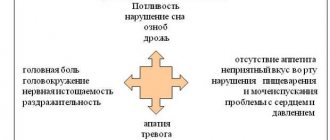Last updated - January 2022
Almost every day, law enforcement agencies register reports of missing people. In most cases, the search ends successfully, but sometimes the disappearance is due to the commission of illegal actions against the missing person. One possible criminal act in such situations may be kidnapping.
It begins with the chapter of the Criminal Code of the Russian Federation on crimes encroaching on intangible values, primarily on a person’s physical freedom, personal integrity, guaranteed by the Supreme Law of Russia and international acts. Responsibility for kidnapping is established by Art. 126 of the Criminal Code of the Russian Federation.
Kidnapping from a criminal legal point of view
Any crime must have 4 components, different for each specific criminal act. Without at least one component, it is impossible to hold someone accountable.
Kidnapping is no exception; these elements for liability to arise must be:
- The subject is the one who commits the crime. For the kidnapping of a person, the 14-year-old citizen who committed it is subject to criminal liability. The legislator considered that at this age a person is mature enough to understand the harm caused by this act. In addition, the person must be of sound mind.
- The subjective side is the attitude of the criminal to the actions performed. For liability to arise, the abduction must be committed with direct intent. This means that the criminal is quite clearly aware of what he is doing, what dangerous consequences his actions may entail for society, and wants them to occur.
- The object is the social relations that the crime causes harm. In the case under consideration, this is the freedom of a specific victim or victims in its physical expression. Abduction may have additional objects - property, health, life of the abducted person or his loved ones.
- The objective side is the actions themselves committed by the offender, which define the crime.
According to the comments to the article, abduction is the secret or overt removal of a person against his will from the place where he is located or his usual habitat, followed by moving to another place with the purpose of detaining him there.
Alleg freed
But a week later, the morning train from Makhachkala brings a new freed slave. The frivolous guys from “Alternative” saved another person.
The slave's name is Alleg Fetkhulov, a short Tatar in sweatpants. Nose to one side, looking with a grin. Actually, Alleg is a 5th category mechanic. But wages in Saransk are miserable, so I moved to Moscow to earn money. He was a roofer, knocked together pallets, loaded books into printing houses, quit his job, decided to return home, but went on a spree for two days at the Kazansky railway station.
“I was going to go through Ryazan,” recalls Alleg. “I already bought a train ticket for 330 rubles.” But two Caucasians came up and offered me a drink. I woke up on a bus already in Dagestan. I ask the driver: where are we going? He told me: you’re going to work. The drivers are watching us there. In Makhachkala, I was met by the owner in a jeep. I have not yet recovered from the fact that my drink was spiked. I followed him like a sleepwalker.
In general, the stories of Dagestan slaves are written as carbon copies. What happens next depends on where you end up. Alleg was lucky here.
“It was a good factory: they didn’t beat us, they gave us meat,” he recalls. “Two packs of cigarettes a day.” On Tuesdays and Saturdays there is a pour-over. Half a liter for two. But in the morning I have a headache, but it doesn’t hurt – I have to work. Even on Eid al-Fitr they forced me to work hard.
Five people lived in trailers. They worked from 6 am to 9 pm. Seven days a week. Alleg's duty was to place bricks in the kiln.
“You take two at a time and put them down,” Alleg demonstrates a movement brought to the point of automatism. Thumbs down, holding the bricks by the holes. The former slave now has hard calluses on these fingers.
For poor performance they could be excommunicated from vodka, not given tea, and given fewer cigarettes. And so as not to run away, the owner kept the passports with himself. But here Alleg cheated.
“I said that I lost the documents, so I still have them in my hands,” the slave grins. “Another thing is that there are mountains all around to go somewhere.” The owner promised that he would even pay. But no more than 7 thousand per month and only when the season is over. Or maybe after next season. Or maybe he won’t pay - not everyone gets the money. I asked him to at least buy me a ticket, he replied: you owe me another 15 thousand, Tatar, I, they say, gave them for you.
Features during qualification
The law somewhat differentiates responsibility for committing a completed and an unfinished crime.
In order for the kidnapping to be considered completed , and for the perpetrator to be held fully accountable, there is no need for negative consequences. The crime is over already from the beginning of the movement of the victim after the seizure.
All other actions with the victim, committed after the abduction, for another purpose - demand for ransom, violence, deprivation of life, etc., are assessed according to other norms of the Criminal Code of the Russian Federation.
For example , a person is kidnapped and the criminal demands money for his release. In this case, he commits kidnapping with a mercenary motive and extortion.
When bodily injuries are caused during the abduction, they are not additionally qualified under the article on causing harm to health.
If the goal is not the kidnapping itself, but another crime, the actions are assessed only according to the article that establishes responsibility for it.
For example , a person was captured to be killed in a deserted place, where his life was taken. Such actions are assessed only as murder, additionally under Art. 126 of the Criminal Code of the Russian Federation does not qualify them.
Some details of the action:
- Anyone can become a victim. Taking possession of the body of a deceased person is not kidnapping in relation to Art. 126 of the Criminal Code of the Russian Federation.
- The period during which the victim was detained in order to assess the act under Art. 126 of the Criminal Code of the Russian Federation does not matter.
- Detention of a person after abduction separately under Art. 127 of the Criminal Code of the Russian Federation is not considered as unlawful deprivation of liberty.
- Keeping a person where he is, for example, in his home, is not kidnapping.
- Kidnapping with the consent of a person, its staging cannot form part of the analyzed crime. For example, the ritual abduction of a bride with her consent.
- Approval of one's abduction by a minor or other person who is not aware of his actions cannot be regarded as consent.
- The consent of the victim, obtained by deception, is not taken into account when he independently, of his own free will, goes to the place of detention, without realizing it.
- Seizure without the purpose of detaining a person in another place constitutes unlawful deprivation of liberty.
- Anyone who holds a kidnapped person by other persons will also only be liable under Art. 127 CC.
- According to the norm under consideration, the facts of abduction of a child by a parent or relatives are not considered abduction if, in their opinion, even if incorrect, they do this following the interests of the child.
When can you avoid punishment?
If the kidnapper voluntarily releases the victim, he will be released from liability. But for this to happen, other elements of the crime must be absent.
If during the period when the victim was being held by the attacker, she was injured or otherwise harmed to health, then in this case the perpetrator will be convicted under another article.
The punishment will not apply to parents or close relatives who stole a child and were guided by good intentions and motives.
Thus, if the attacker voluntarily released the kidnapped person, then criminal punishment can be avoided.
Punishment for kidnapping
The degree of responsibility for kidnapping increases in direct proportion to the danger of this act to society.
Kidnapping without aggravating circumstances will be a simple offense and is punishable by forced labor or imprisonment for up to 5 years.
Liability that is more stringent than simple liability is established by the second part of Art. 126 of the Criminal Code of the Russian Federation. She cites signs indicating a more cynical attitude of the criminal towards his crime.
Qualified under the second part of Art. 126 of the Criminal Code of the Russian Federation there will be kidnapping in relation to:
- a minor whose age was reliably known to the offender;
- a pregnant woman, when the perpetrator was aware of her situation;
- two or more people.
Also, to be qualified, it must be perfect:
- Two or more persons who agreed on a crime in advance, that is, a group of persons by prior conspiracy.
- With violence dangerous to the health and life of the victim, or with a threat to use it. Damage to the health of the abducted person from mild to severe will be dangerous.
- With weapons , with objects that were used as weapons.
- For selfish reasons.
If the qualifying criteria are met, the punishment is imprisonment within the range of 5-12 years. The court has the right to additionally impose a restriction of freedom of up to 2 years.
The third part of the article defines liability for kidnapping under even more dangerous conditions for society:
- The commission of a crime by a stable community united for illegal activities. Such a community is called an organized criminal group, or OCG for short.
- Death and other serious consequences resulting from the abduction. These consequences can include mental and severe physical illness.
Kidnapping with particularly qualifying characteristics entails loss of freedom from 6 to 15 years with or without additional restriction of freedom up to 2 years.
Legislative regulation of the act
The main regulatory document in matters of qualifying the corpus delicti of such a crime as kidnapping is Article 126 of the Criminal Code of the Russian Federation. This document contains the main qualifying features of the act; it also sets out the penalties that threaten the offender for the act.
According to Article 126, theft as a criminal offense can be established if the following elements are present:
- the personal freedom of a particular person subjected to theft is the main object of this crime;
- kidnapping is expressed in the implementation of active actions by an attacker or a group of persons - while in the definition of a crime there is no need to confirm the fact of the occurrence of dangerous consequences;
- the criminal is aware of the illegality of taking possession of a person and holding him against his will;
- the property gain of the attacker is the main goal in most cases of theft;
- According to criminal law, persons over the age of 14 can be recognized as the subject of a crime .
Among the qualifying signs of theft, the acts of which provide for criminal liability in accordance with Article 126, include:
- preliminary conspiracy of participants or a group of criminals;
- implementation or threat of implementation of violent methods of influence;
- use of weapons or other instruments to potentially harm the health of the victim;
- if there is an infringement on the freedom of a minor;
- if a crime is committed against a pregnant woman;
- group abduction (victims are two or more persons);
- selfish motive for criminal acts.
Release from liability
Despite the severe liability, the legislator has provided the opportunity to avoid punishment under certain conditions. This was done, on the one hand, in order to minimize the consequences for the victim, and on the other, to enable the erring citizen to realize his act and correct it as far as possible.
The conditions under which the perpetrator may not be punished are indicated in the note to Art. 126 of the Criminal Code of the Russian Federation:
- voluntary release of the victim;
- absence of other crimes committed by the kidnapper.
Release can be assessed as voluntary when the kidnapper had the opportunity to continue his criminal actions, but decided to release the victim. Why he decided this is not important.
A situation where a criminal releases a kidnapped person after fulfilling the conditions of release, for example, transferring money, even when he was unable to receive it, for example, was detained, is not considered voluntary release.
What is attempted kidnapping
The crime is considered completed when the criminal illegally captured the victim and began transporting him. In this case, it does not matter whether the attacker managed to reach the destination or not.
Often the culprit fails to finish what he started. Unforeseen circumstances may interfere, for example, the victim began to resist. In this case, the crime is considered unfinished, and the punishment is less severe.
For attempted kidnapping, the liability will be no more than 3/4 of that provided for in Article 126 of the Criminal Code of the Russian Federation. Preparation for a crime is considered to be the purchase of objects and weapons to commit it, the search for accomplices and the creation of the necessary conditions to detain the victim.
For preparation for a crime that was not carried out, a punishment of half the maximum term of Article 126 of the Criminal Code of the Russian Federation is provided.
Difference from unlawful imprisonment and hostage taking
The Criminal Code of the Russian Federation contains two acts that at first glance are similar to kidnapping - unlawful deprivation of liberty and hostage taking. Even though the elements are similar, the differences in them are significant.
This is precisely the reason why the legislator established liability for their commission under different articles, within different limits.
The difference from unlawful deprivation of liberty lies in the actions. During deprivation of liberty, the victim is not moved anywhere; he is held physically or by threats where he was. In addition, liability under this standard is possible from the age of 16.
The difference with hostage taking lies in the object, that is, in what relationships in society are harmed. If, when a person is kidnapped, the object is the freedom of a specific person, then the taking of a hostage encroaches on public safety, and the freedom of the hostage is an additional object.
The goals of these acts also differ significantly. In the first case, the goal is to kidnap a person, all other actions are other crimes. In the second, to achieve compliance with the criminal’s demands as a condition for the release of the hostage.
What is the difference between kidnapping and hostage taking?
The most severe punishment is provided for taking a person hostage. The perpetrator could face up to 20 years in prison or life imprisonment. Article 206 of the Criminal Code of the Russian Federation is dedicated to this crime. This article sets out aggravating circumstances.
What is the difference between these two crimes:
- Transportation of the victim. In the event of a kidnapping, a person is always transported to another premises and then held. But when a hostage is taken, this condition is not met.
- Selfish motives. A special sign of hostage taking is coercion to perform any actions in the interests of the criminal. Often an attacker demands that an organization or government fulfill certain conditions. When abducted, the criminal does not always demand that any conditions be met.
- Method of abduction. The criminal takes a hostage openly in order to attract attention to himself. And at the time of the abduction, the attacker acts covertly, leaving no evidence or traces.
During a hostage-taking, the criminal intimidates the victim and makes open threats. And in the case of kidnapping, threats to the victim are made privately and secretly.
Have a question for a lawyer? Ask now, call and get a free consultation from leading lawyers in your city. We will answer your questions quickly and try to help with your specific case.
Telephone in Moscow and the Moscow region: +7
Phone in St. Petersburg and Leningrad region: +7
Free hotline throughout Russia: 8 (800) 301-39-20
What to do if a person is kidnapped
Often the fact that a person has been kidnapped, that is, a crime has taken place under Art. 126 of the Criminal Code of the Russian Federation, it is almost impossible to establish initially. It is possible to correctly assess the act of the perpetrator under this article after all the circumstances have been established.
We can talk about signs
Most often, all that is immediately clear is that the person has disappeared, is not in contact, or something happened to him. And to establish how this happened is a task for law enforcement officials.
Come and pick up
One day, a former employee of the Mercy bus fell into the hands of slave owners, where they help people who are freezing at train stations. His name was Ilya, a former tramp, he quit drinking and even married a volunteer girl. He himself began working on the bus, providing legal assistance to the homeless, since he was a lawyer by training. But he started drinking again, separated from his wife, and found himself on the street again.
“They picked up Ilya at the station while he was drinking beer,” says Nikita Danov, an employee of the “Mercy” service. “They treated him to a drink and bought some kind of chicken.” And they said that, as a lawyer, he would find work in Dagestan, registering cars. They added something, and he woke up already on a bus, far from Moscow.
In general, the story exactly repeats other stories about Dagestan slavery. With the only exception that they sold Ilya not to a brick factory on the plain, but to a quarry in the mountain village of Mekegi. He was kidnapped on New Year's holidays, and on Christmas the slave miraculously got hold of a mobile phone and wrote to Nikita Danov on VKontakte.
“Soon I had all the names, addresses and car numbers,” recalls Nikita. “I wrote a statement to the police.” Silence. Then, through friends, I got the contacts of a security officer who worked there undercover. As a result, three people with machine guns entered the quarry and brought out one, Ilya.
This is what the liberation of slaves in Dagestan usually looks like. And it does not happen openly, with the police and the arrest of slave owners. It is more like a kidnapping or theft.
“One man from Belarus passed through us; he was rescued from the factory by a local mullah and a local police officer,” confirms Anna Fedotova. “They released him secretly, because they couldn’t do it openly.” The district police officer gave him a bus ticket and said that he couldn’t help with anything else.
“Alternative” activists act in much the same way. At the request of relatives, they are looking for a specific missing person in Dagestan. And they free him. Only him. They don’t have their own machine guns, but in a republic filled with security forces, finding people with weapons is not a problem.
“For example, if the slaves are in Mekegi, you can always take police from Makhachkala,” explains Oleg Melnikov. “By the way, the former mayor of Makhachkala Said Amirov helped us a lot, he even gave us people from his security.” Now that he has been imprisoned, some of the employees are still involved in our operations. In general, freeing slaves is much easier than it seems. Usually there are no fences with barbed wire or serious security at the site.
Not everyone wants freedom. In Dagestan, deserters from both Chechen wars work for shelter and food. The way home is blocked for them - no amnesty has been announced. Many slaves were freed from the colonies and had nowhere else to go. But the main contingent are those who came from the regions to Moscow for work and did not find it.
“Real homeless people, who consciously chose such a life, don’t go to brick factories because they don’t want to work,” explains Oleg Olkhov. “Those who came to work, whom no one warned, fall into this trap. We are now thinking of publishing a pamphlet on slavery and distributing it at railway stations. Actually, the state should do this, but there is no hope for it.
Where to go
Reports of missing persons or, as law enforcement officials call it, missing persons, are submitted to the police department . It would be better if it was a department in the place from which the victim disappeared. The possibility of submitting an application to any police department is not excluded.
There are no reasons why an application may not be accepted. The interdepartmental instructions on this issue indicate that such messages are accepted and registered regardless of how long ago, where the person disappeared, the availability of information about the place of residence, the completeness of personal data, photos, or information about previous cases of disappearance.
Conducting checks and investigating criminal cases of kidnapping falls within the competence of investigators of the Investigative Committee - the Investigative Committee, therefore a statement about the disappearance of a person can be written to its territorial department.
Kidnapping: Characteristics
Often in the modern world, law enforcement officers are faced with kidnapping, that is, the kidnapping of citizens.
To appreciate the kidnapping of a person and its difference from the taking of a person hostage, it is necessary to comprehend the possible goals of such an act. Externally, this crime also represents the forcible detention of a person and deprivation of his ability to move freely, as well as his movement in the area against the will of the victim.
The main intention of the criminal: to kidnap and hold a person in a certain place for the required time. This is the main purpose of this offense.
It becomes quite clear that the object of criminal activity is the interests of a particular person, an encroachment on his freedom, which is guaranteed to every citizen of the country.
- direct intent (to restrict the freedom of another person for one’s own purposes, ransom, blackmail, etc.);
- the presence of motives (the subject has reasons why he commits a crime);
- a clear goal (elimination for some time or forever of a person from a certain environment, without implying harm to him or his death).
Thus, abduction is associated with a specific person, with his physical elimination (not death). The criminal needs this for some purpose.
Sometimes these goals, from an everyday point of view, can be justified. For example, a neighbor owes you a large sum and does not want to pay you back. You kidnap him and keep him locked up at your dacha, while demanding repayment of the debt. In general, the desire of the criminal is quite understandable. However, from the point of view of the law, kidnapping a person is wrong. The legislator considers such actions to be criminal and imply criminal liability.
Sometimes, when kidnapping a person, the subject pursues the goal of inflicting severe beatings on him or wants to kill him.
In this case, the act will not be qualified under Article 126 of the Criminal Code, since “pure” kidnapping does not involve causing harm to health.
An example of actions that the legislator classifies as kidnapping is the following situation. One of the researchers learns that his colleague found the answer to a complex scientific problem before him. He decides to eliminate his opponent for a while.
- Taking possession of the results of a scientific discovery.
- Providing them to the public as their own achievement.
- The desire to gain time to solve the problem yourself and act as a pioneer.
The main point is that no physical harm is intended. There is also no goal to demand something from the state.
How to write an application correctly
The application for kidnapping is addressed to the head of the police department to which the applicant is applying, and contact information is indicated. It is drawn up in a simple form; there are no special requirements for the content of such an appeal. The main thing is to describe the event that became the basis for the appeal, to state a request to search for the missing person.
Sample application for kidnapping.
Information boards in police department control rooms usually contain examples of the most common statements.
The application to the Investigative Committee is drawn up in the same way, only it is addressed to the head of the territorial department of the Investigative Committee.
Who needs it?
“There was no news from my husband for three days,” recalls Alleg’s wife Olga. “And then he calls me and says that he is in Dagestan.” At least until the New Year.
Olga looks tired. She's straight from the train. Spent the night in Lyubertsy, with Oleg Melnikov. Actually, the activist has a wife and a small child, but what else should Olga do?
“I first went to the FSB, but they told me that if it’s a kidnapping, then it’s to them, and if it’s just a detention, then it’s to the police,” the woman says. “The police didn’t help.”
Then there was another FSB man, a former student of Alleg’s wife. He said directly: who needs him?
Finally, Olga found Oleg’s advertisement and asked for help. It soon turned out that it was not easy to get a husband, since the plant belonged to the son of a judge. But the Dagestan activists of Alternative did their job.
The mother of Muscovite Vyacheslav Komarov, Lyudmila, called the police even before her son was taken away from Moscow. It was May 1st. Vyacheslav, an unwell man after the accident, was sitting in his yard. Strangers came up and offered me a drink. In general, a classic scheme. True, the guy was able to call home from Teply Stan before boarding the bus.
“First I ran to my place of residence, to the Maryina Roshcha police station, then to the Teply Stan police station,” recalls Lyudmila. “But there were May holidays and no one wanted to bother. The case was not opened. No one even talked to the woman who gave my son the phone to call.
If the police had introduced, say, the “Interception” plan, they would not have had to rescue Vyacheslav from the brick factory. But they react extremely reluctantly to slave affairs. First of all, because social outcasts become victims of kidnappings.
“About five years ago we received information that homeless people in the Moscow region were being kidnapped by gypsies, their legs were sawed off and they were forced to beg,” says Anna Fedotova. “But no one in the police was interested.” The victims are homeless...
What happens after you submit your application?
After registering such a message, the applicant is asked a number of questions, the purpose of which is to restore the circumstances of the person’s disappearance and to understand whether they indicate a crime. This is necessary to put forward versions of the loss.
If the established circumstances of a person’s disappearance indicate that he has been kidnapped, a report of an unknown disappearance received by the police department is transferred to the territorial division of the Investigative Committee (IC) for conducting a pre-investigation check and subsequently making a procedural decision.
An exchange of information has been established between the Investigative Committee and the police on the unknown disappearance of citizens. We can say that investigators of the Investigative Committee carry out procedural checks and investigate criminal cases, collecting evidence, and police officers accompany the inspection and investigation of the case, carrying out operational search activities.
Based on the results of the check, if there is sufficient information that the victim was abducted, the investigator of the Investigative Committee initiates a criminal case; if there is no or insufficient information, he refuses to initiate it. You can file a complaint against this decision with the head of the investigator, the prosecutor or the court.
Despite the decision made based on the results of the inspection, if the missing person has not been found, the search for him continues by the police during operational search activities.
Did the article help you?
Not really
Infiltration into the bus
Meanwhile, Oleg Melnikov’s two-week operation to identify recruiters has reached the home stretch. One autumn evening he called and said that he was almost getting a job in Dagestan.
The village of Mamyri in New Moscow begins immediately beyond the Moscow Ring Road. Most of it is occupied by a huge clothing market. There is also an unofficial bus station for the North Caucasus direction. It's seven o'clock and most of the shops are already closed. In the very south of the village it is dark and deserted. Two buses with Dagestan license plates are loading at the side of the road. In the distance, Oleg Melnikov with a short, black-haired companion looms at a stall with food and drinks, but what they are doing there cannot be seen at such a distance. A Ren-TV film crew's car is on duty in the parking lot.
Activists of the "Alternative" movement are nowhere to be seen. About ten minutes later one finally arrives. His name is Alexey, he is on a moped today, and left the car at home, because Oleg also did not warn him about anything. The police were not warned, even less so.
Then events unfold rapidly and the further it goes, the more they look like a farce.
The companion accompanies Oleg to the door, and the first bus takes off sharply towards the Moscow Ring Road. We give chase by car and moped. Number 02 does not answer, the traffic police on duty is silent and it is completely unclear what to do. Finally, someone comes up with a bright idea. Alexey on his moped overtakes the bus, fortunately in a traffic jam it is not difficult, he warns the traffic cops at the post at the turn to Varshavskoye Highway, where the bus is finally stopped.
Oleg is led out of the salon by the arm. He steps unsteadily, speaks incoherently, sits down in a chair at the post and asks to call an ambulance. In an hour he will be taken to the Sklifosovsky Institute to be treated for poisoning.
“He entered on his own and fell asleep drunk,” the bus passengers assure. “We all sat there waiting for him.”
The crowd of Dagestanis is nervous and swearing. One of the replacement drivers is most dissatisfied. He screams, forbids anyone to take pictures of himself and confusedly tries to explain why he allowed Oleg into the salon without checking the documents and without taking money for the trip.
Policemen are coming from all directions. A group from the nearest police department, several investigators from the MUR, a mustachioed traffic police colonel, a lieutenant colonel of the Investigative Committee. The testimony lasts all night, and at half past five the young captain reports that Oleg has no poisoning.
“They just called from Sklif, he only has alcohol, the boy has been playing around,” the policeman throws away his cigarette butt with irritation. “But all of Moscow was raised, right up to Yakunin.”
Four days later, Oleg will be released from the hospital. If you believe the extract, then he really did not have any poisoning. Either the recruiters noticed the surveillance. Either the activist himself overplayed his hand so much, pretending to be ready to go to work, that they decided not to give him anything. The heroic infiltration operation turned into a comedy.
Photo: Alexey Nikolaev, Kommersant
Slave for the price of a laptop
The outskirts of Makhachkala are a huge construction site. Along the sides of the road from the airport there are private houses of varying degrees of completion. The main building material is large, roughly molded handicraft brick. Local goods, in Ingushetia, for example, you won’t see this.
Dagestan brick factories are clearly visible from space. On satellite images they appear as red spots in Makhachkala, Kaspiysk and their closest suburbs. Right among residential buildings and cottages. The clay is dug there, on the territory of the plant. Gas for firing is often taken simply from a pipe.
A brick costs 13 rubles during the season, now it’s 10. At the factory where Alleg worked, 20-25 pallets of 450 bricks each were shipped per day. This means an income of 3-4 million per month, depending on the season. Subtract the maintenance of slaves, salaries of civilians, transport, electricity and other organizational costs - and you get a small business. Remove slave labor and free gas, and the profits of factories will be in question.
That's why Alleg cost his owner only 15 thousand. For the same amount they bought Ilya at the quarry. For the price of an inexpensive laptop.
“A slave who can work in a sauna costs from 70 to 150 thousand rubles,” explains Oleg Melnikov. “A grandmother to beg for alms costs 35 thousand.” For a man they used to ask for 1-1.2 thousand dollars, but now the price of a slave has dropped to 500.
Criminal goods become cheaper only when the risk is low. And Russian labor slavery exists in a comfortable mode. Recruiters, without fear of anyone, recruit provincials that no one needs. For one broken life, according to Alternative, they receive 3 thousand rubles. Not much, but the work is not dusty. Drivers look after live goods along the way. And slave owners don’t even consider it necessary to spend money on security and fences.
When this article was almost ready, the prosecutor's office of the Republic of Dagestan conducted another inspection of the implementation of legislation at brick factories. Naturally, “the prosecutor’s investigation did not establish any facts of forced labor in any form.”










